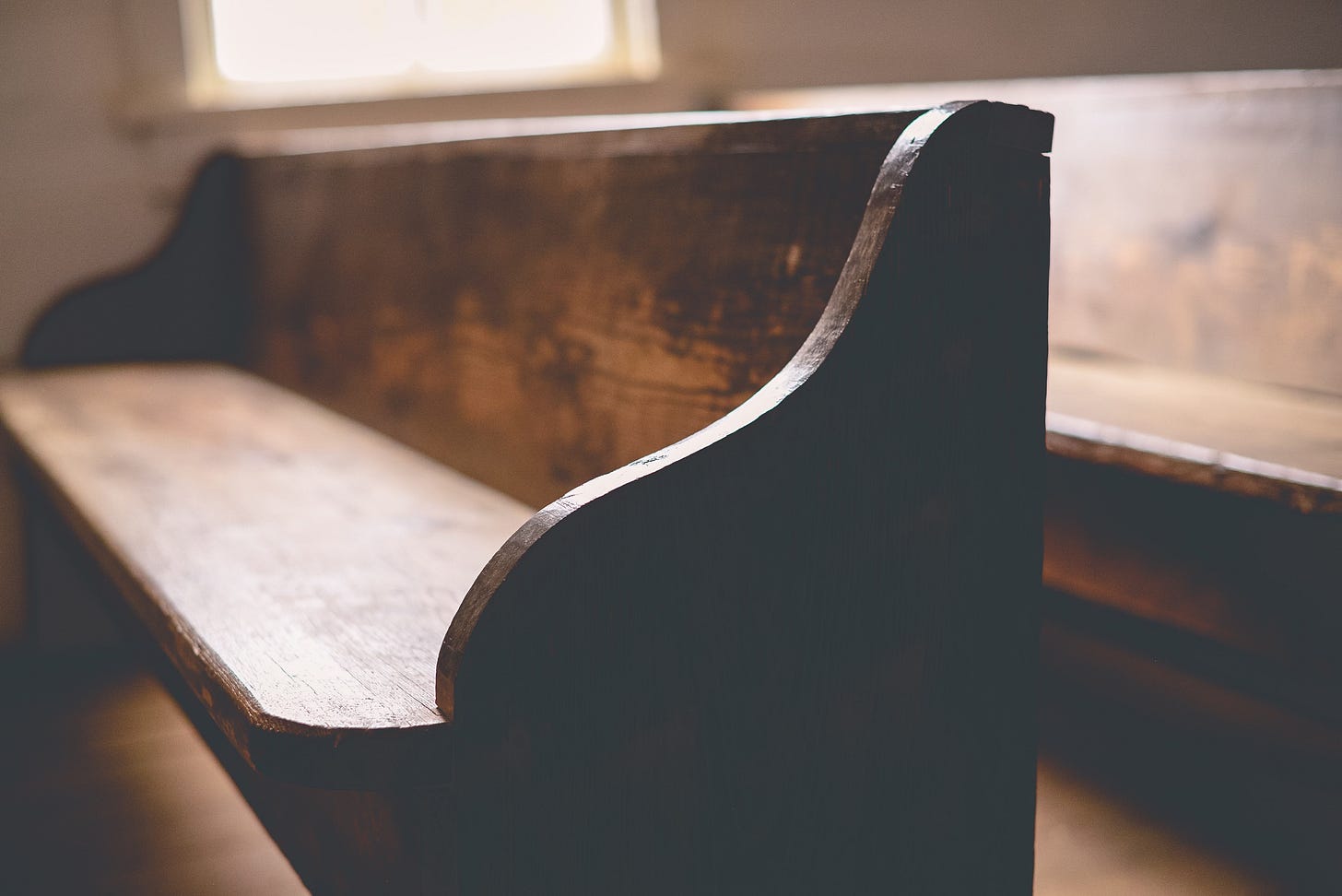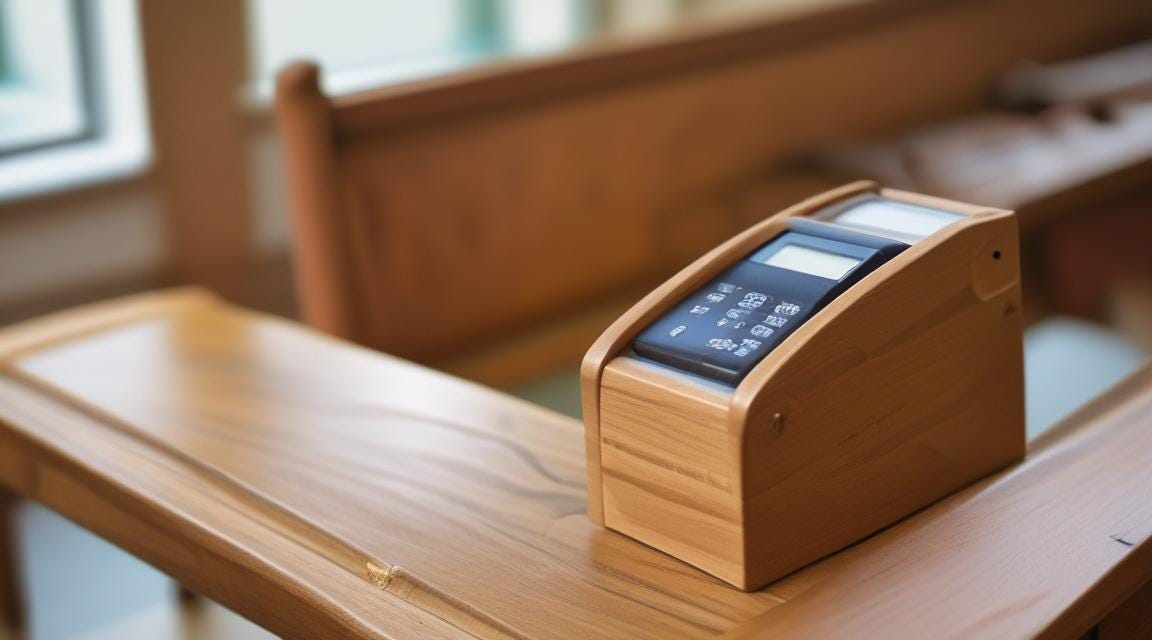A Sit-Down History of Pews, Privilege, and Pledge Cards
The Surprising Saga of Your Sunday Seat
Standing Room Only
Imagine walking into a church service today and finding no seats at all. It's hard to picture. Yet, this was the norm for more than the first millennium of Christianity. Worshippers stood throughout the entire service, a practice that continued well beyond 1000 AD. (Orthodox still stand today as if they were in the presence of a King.) But in the West, it meant that attendees stood during the not-so-short sermons of Athanasius, Chrysostom, Augustine, Jerome, and other luminaries of the pulpit.
It isn't something we think about today, surrounded by new churches with padded pews, cushy chairs, and comfy stadium seating (sometimes with cup holders), but congregational seating was foreign to early Christians. In these early churches, only a select few had the privilege of sitting in designated seats in the chancel. Stone benches lined the walls for the weak-kneed, and spaces were reserved for the elderly. In monasteries, clever monks developed 'misericords' - wooden seats that allowed them to lean while appearing to stand during extended services. (The word means "mercy". It was a folding "cheater"; a small sit-shelf to take a load off the back.)
The acronym for worship in the First Millennium was SRO. Standing Room Only.
Bench Warming: The Dawn of Church Seating
As the centuries passed, church leaders realized that sitting might enhance worship rather than detract from it. In the 13th century, backless stone benches (sans cushions) were introduced in some churches. By the 14th and 15th centuries, movable benches were typical but still sparingly used. These early pews were functional but with plenty of room for improvement.
Then, some enterprising priest, monk, or bishop saw an innovative opportunity for greater comfort at a greater price. The benches were redesigned with wooden backs. They cost extra, and wealthy patrons were happy to pay. The next upcharge was all about location, location, location. Patrons paid more to see more of the service and to be seen more by the locals at the service. The rank and file and the poor remained upright in the back of the church.
Pay-Per-Pew: When Seating Got Serious
The Protestant Reformation in the 16th century brought with it a seating revolution as well. The elaborate finery of an earlier piety was stripped away, sometimes violently. Statues, gone. Candelabra, out. Ornaments, jettisoned. Churches were stripped down to the basics, or as John Calvin had insisted, “four walls and a sermon.” The reformers must have looked at their sparely appointed church, and thought it looked like what it should—a classroom—with benches and back to sit up straight and learn. Pay attention! Thus, fixed pews became widespread in Western Europe, particularly in England.
But with new seating came new financial costs. Churches needed to fund the furniture, especially in the absence of the money streams from Roman indulgences. The era of pew rental was born.
Wealthy families could now rent or own their pews, creating a visible hierarchy within the church. Again, the realtor's motto held: location, location, location. The closer to the chancel, the higher the cost. Some pews were enclosed in boxes, fitted with doors, padded seats, coal-fired foot warmers, curtains, and even personalized carvings. It was like first-class air travel but with prayer.
From what I could read about it, before I was cut off by a paywall at Christianity Today—I mean really—the walls on pew boxes were not short pony walls. They were shoulder height. From the pulpit, the preacher was the only one who could see over the ornate wooden walls of the pew box. Is this the real reason why pulpits were elevated high up off the floor!
The price for these prime seats was not for the faint of heart (or light of wallet). In colonial America, prime pews in prominent churches could sell for the equivalent of tens of thousands of dollars today. Even the first President of the United States, George Washington, participated in this system, helping to finance a new church building in 1774 by selling pews. The meeting minutes of the Vestry of Christ Church (Alexandria, Virginia) contain this telling record of Washington’s dramatic resolution: “…the pews we now hold, in the Episcopal Church at Alexandria, shall be forever, charged with an Annual Rent of five pounds Virginia Money each…”
But not everyone had that kind of coin. So, churches got creative. They subcontracted with members to offset the cost of a pew box by bringing firewood for their in-church stove. It was a "share the warmth" kind of thing.
Open Seating Takes Over
As society evolved, so did church seating arrangements. The pay-per-pew system, while financially beneficial for churches, began to clash with the Christian principles of equality and community. (Duh!) By the time the baby boomers came along, open and free seating had become common in most churches.
Some churches in England and New England are old enough to have the original box pews, although members do not own them. (Their family might still lay a claim to it from an earlier era.)
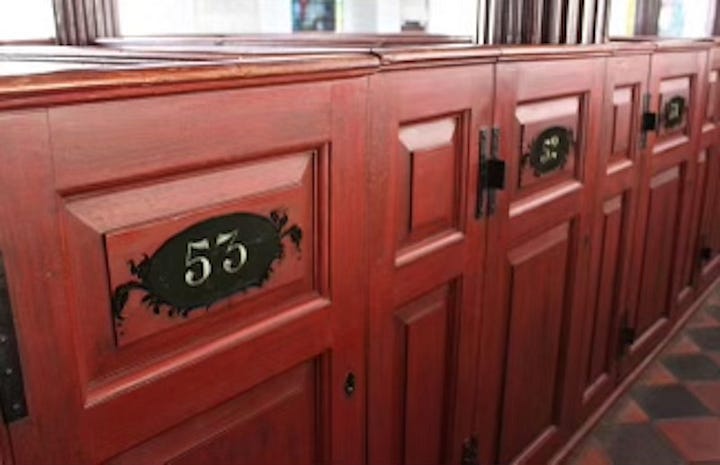

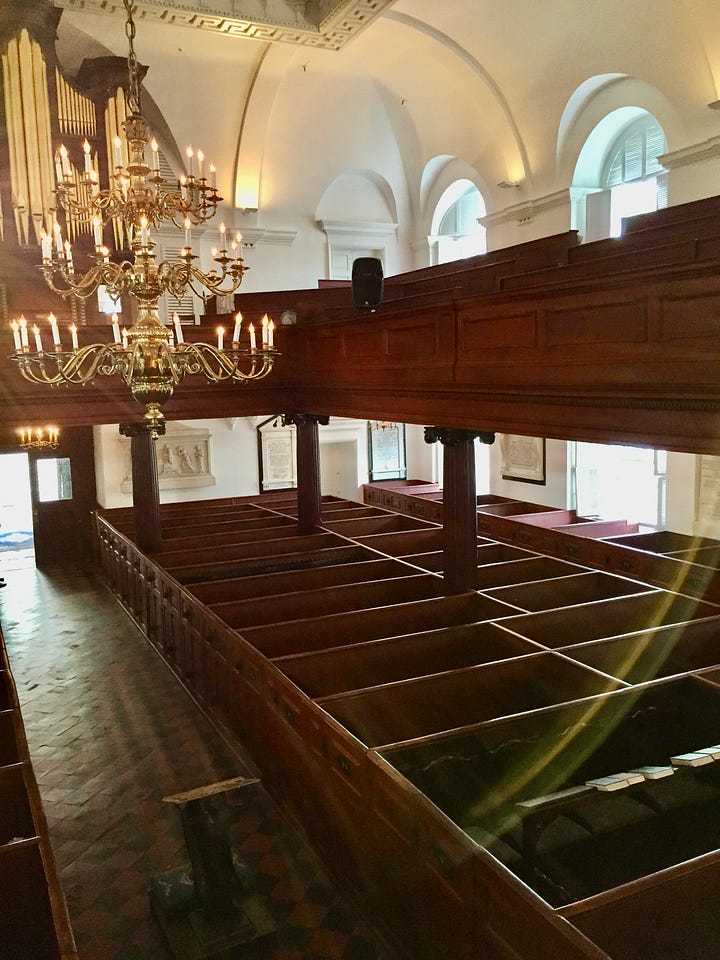
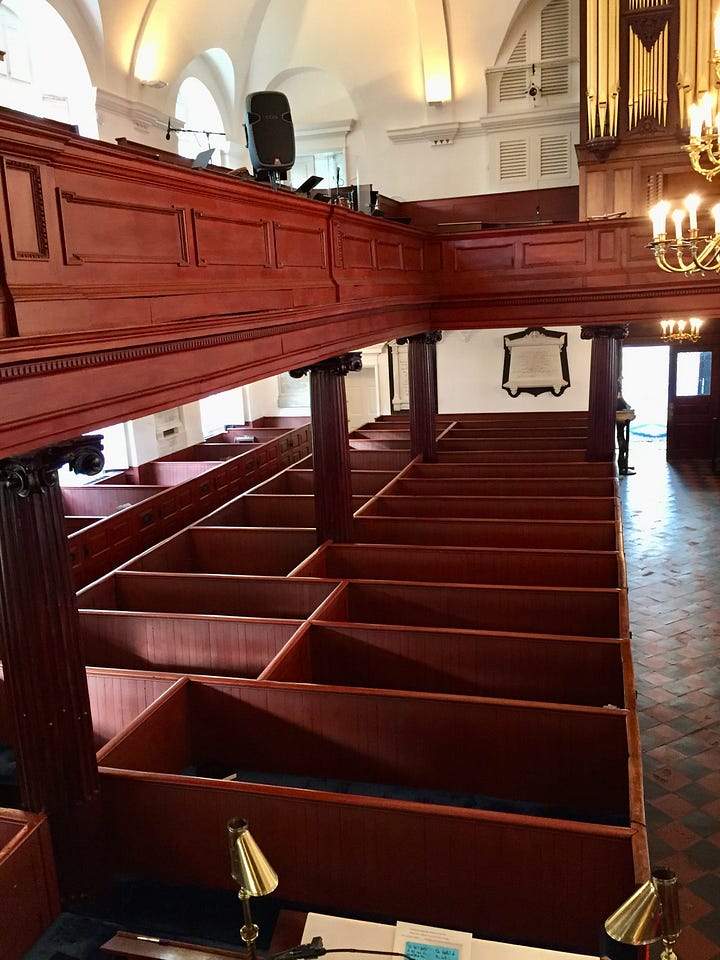
St. Michael's Church in Charleston, South Carolina, is a beautiful big church with a wrap-around second floor. Pews with latched doors line the main aisle. The Rector, my friend Rev. Al Zadig, sent me photos of the historic church. I have been to St. Michael's to preach, and it is bizarre. The people are wonderful, and the beauty of the church drips with nostalgia. Some pews face the pulpit, and some face away. The preacher must preach to many people facing away from the pulpit; with their backs to it. It was certainly strange.
In fairness to the earlier age, sitting with one’s back to the preacher would not have been viewed as a slight. After all, it is the hearing of the Word, not the viewing of the preacher, that counts. “Faith comes by hearing…” said the Apostle Paul. (Romans 10:17)
The church's architecture is stunning, but the old-fashioned arrangement of boxed pews is a relic of a bygone era. Given the church's designation on the local historical society rolls, renovation is as unlikely as installing cup holders.
Around a century ago, the once-common practice of charging for pew seating began to decline. This change, however, brought about financial consequences for the church, which had grown dependent on the revenue from pew rentals.
While the transition to open seating made services more inclusive and accessible, they now faced the task of finding alternative means to fund their operations without reliable income from pew rentals. Church administrators were confronted with a complex issue that could be the subject of its own sermon: How can we cover our expenses, fulfill our mission, and ensure financial stability?
The Rise of the Annual Pledge
Enter the annual pledge system. Instead of renting physical space, congregants were asked to commit to a specific financial contribution each year.
The church pledge card became the new cornerstone of church finances. Every year, member families were canvassed and asked to sign a card indicating their financial commitment.
To help the members keep track of their time-shared pew, churches provided boxes of tiny envelopes - 52 for weekly offerings and a few extras for special offerings and holidays. It was like an Advent calendar, but for every week of the year.
People were not renting a pew; it was sort of a time-share. You didn't have one seat. You could choose from any of the available pews or chairs. However, every regular attendee faces the awkward moment of discovering strangers sitting in their usual pews. Squatters!! Old habits, lived over centuries, die hard.
As pledge cards became more widespread, church leaders began to recognize their potential beyond mere budgeting. Filling out a pledge card became a spiritual exercise in itself, encouraging congregants to reflect on their financial stewardship.
The Digital Plate
As we moved into the digital age, the pledge card faced a new challenge: the rise of online giving platforms and automatic bank drafts. Some tech-savvy churches embraced this change, creating "e-pledges" that could be filled out and submitted online. The trend rapidly accelerated in the early days of COVID-19 where every church stressed online, recurring giving.
However, many congregations found that the tangible act of filling out a physical card still held value. In response, some churches developed hybrid systems, allowing members to submit pledges online but still distributing physical cards during worship services for those who preferred the traditional method. It was the best of both worlds - digital convenience with a touch of nostalgia.
Today, the pledge card continues to evolve. Some churches have rebranded their cards with gentler language, using terms like "Estimate of Giving" or "Faith Promise" to soften the perceived obligation. Others have embraced micro-pledges and round-up giving programs, allowing congregants to commit small amounts frequently rather than one large annual sum.
Before I was so rudely cut off from Christianity Today, I copied the title and subtitle of the article I was trying to swipe. “The Oddness of Pews: Where worshippers place their posteriors also shapes their interiors.” Indeed, pews may be odd. But if we wait long enough, the entire seating system for houses of worship might change or come full circle. Can you imagine a seating system that provides cozy and comfy seats free of charge for anyone with bible and prayer book racks and built-in credit card readers? Someone surely is thinking of it.





